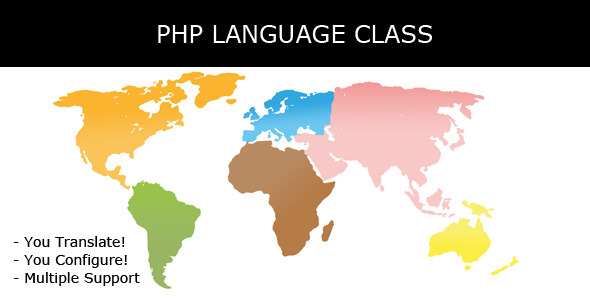PHP Language Class
- Last Update
- 23 April 2012
- Regular License
- $4
- Extended License
- $20
- Sales
- 87
Version 3.1
PHP language class was developed thinking on developers and users. It helps you integrate and configure multiple languages by creating language files using an associative array. Users are able to choose their preferred languages but first the script automatically detects the browser language and use the appropriate language file based on the users default browser language and in case you don’t have created that language the script will use the website default language configured on script the. PHP files can be configured using super global GET or POST to convert the website to the particular language. It’s easy to modify and create language files. Documentation and demos available!
Updates: April 2012 (Version 3.1)
Updated Documentation – Supported Languages Codes Updated Class (Now Supports Worldwide Languages) Updated Demo
November 2011 (Version 3.0)
Rewritten the class Fixed bugs that limited and prevented the use of functions and OOP for the translations. Improved Documentation, added more examples on how to use on functions and classes creating the possibility for large projects
August 2011 (Version 2.0)
Fixed an issue with the preferred default language due to sessions and changed the languages file extension to “.lang”;
Code Example:
require_once("includes/file.conf"); $var = new Language; $var2 = $var->getLanguage($params);
// to call echo $var2['translatedKey'];
// to use on functions function translate_title() { global $var2;
return $var2['title']; } echo translate_title();
and more...
